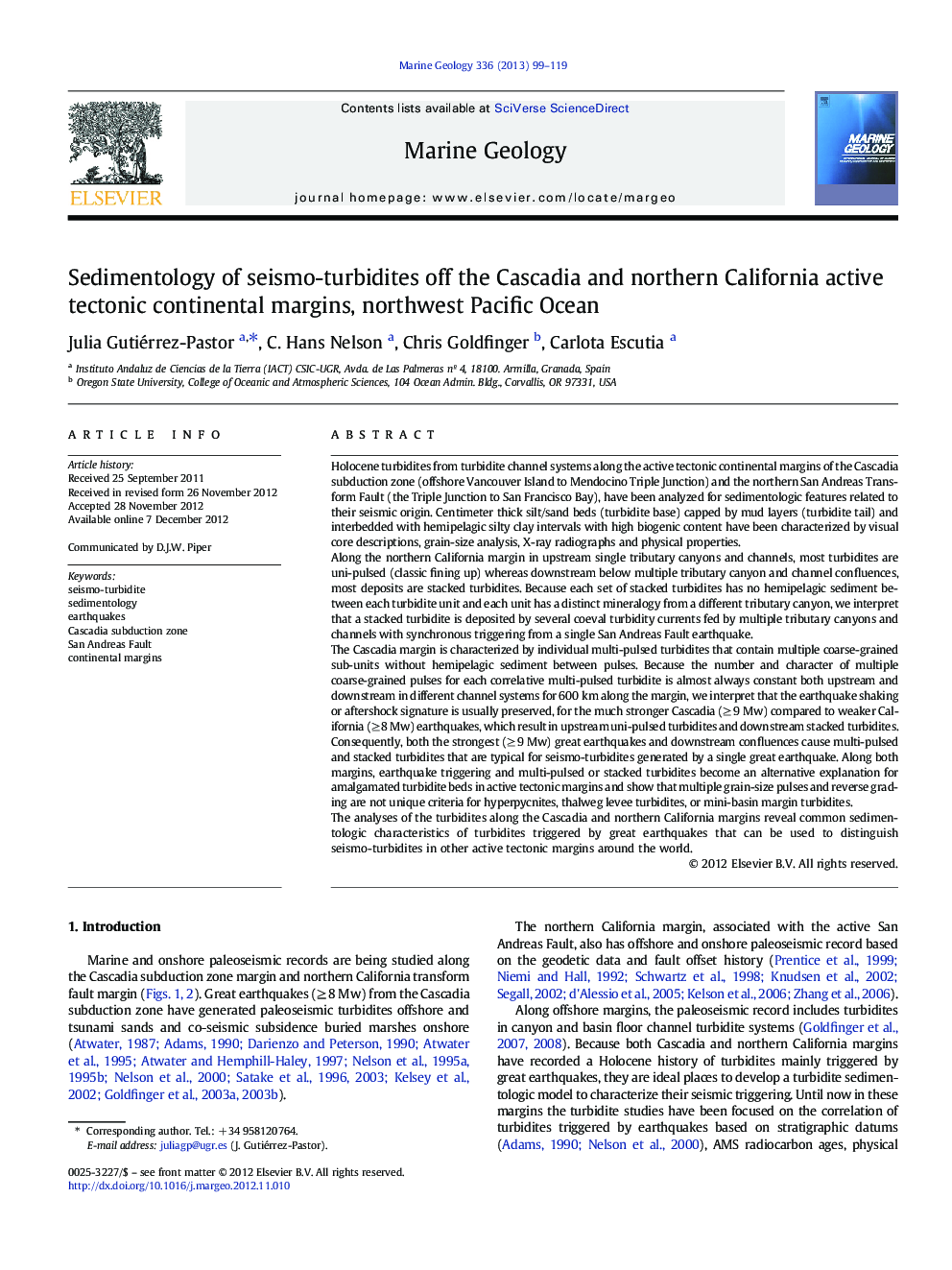| کد مقاله | کد نشریه | سال انتشار | مقاله انگلیسی | نسخه تمام متن |
|---|---|---|---|---|
| 4718440 | 1639116 | 2013 | 21 صفحه PDF | دانلود رایگان |

Holocene turbidites from turbidite channel systems along the active tectonic continental margins of the Cascadia subduction zone (offshore Vancouver Island to Mendocino Triple Junction) and the northern San Andreas Transform Fault (the Triple Junction to San Francisco Bay), have been analyzed for sedimentologic features related to their seismic origin. Centimeter thick silt/sand beds (turbidite base) capped by mud layers (turbidite tail) and interbedded with hemipelagic silty clay intervals with high biogenic content have been characterized by visual core descriptions, grain-size analysis, X-ray radiographs and physical properties.Along the northern California margin in upstream single tributary canyons and channels, most turbidites are uni-pulsed (classic fining up) whereas downstream below multiple tributary canyon and channel confluences, most deposits are stacked turbidites. Because each set of stacked turbidites has no hemipelagic sediment between each turbidite unit and each unit has a distinct mineralogy from a different tributary canyon, we interpret that a stacked turbidite is deposited by several coeval turbidity currents fed by multiple tributary canyons and channels with synchronous triggering from a single San Andreas Fault earthquake.The Cascadia margin is characterized by individual multi-pulsed turbidites that contain multiple coarse-grained sub-units without hemipelagic sediment between pulses. Because the number and character of multiple coarse-grained pulses for each correlative multi-pulsed turbidite is almost always constant both upstream and downstream in different channel systems for 600 km along the margin, we interpret that the earthquake shaking or aftershock signature is usually preserved, for the much stronger Cascadia (≥ 9 Mw) compared to weaker California (≥ 8 Mw) earthquakes, which result in upstream uni-pulsed turbidites and downstream stacked turbidites. Consequently, both the strongest (≥ 9 Mw) great earthquakes and downstream confluences cause multi-pulsed and stacked turbidites that are typical for seismo-turbidites generated by a single great earthquake. Along both margins, earthquake triggering and multi-pulsed or stacked turbidites become an alternative explanation for amalgamated turbidite beds in active tectonic margins and show that multiple grain-size pulses and reverse grading are not unique criteria for hyperpycnites, thalweg levee turbidites, or mini-basin margin turbidites.The analyses of the turbidites along the Cascadia and northern California margins reveal common sedimentologic characteristics of turbidites triggered by great earthquakes that can be used to distinguish seismo-turbidites in other active tectonic margins around the world.
► Holocene seismo-turbidites from NW American active tectonic margins.
► Shaking signatures of ~ 9 Mw earthquakes cause individual multi-pulsed turbidites.
► 8 Mw earthquakes plus downstream channel confluences cause stacked turbidites.
Journal: Marine Geology - Volume 336, 1 February 2013, Pages 99–119